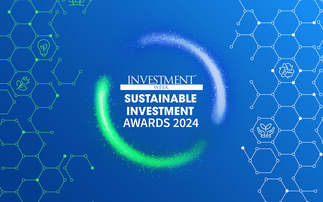How difficult is it to achieve a net zero investment portfolio? On the face of it, the trend is favourable.
As Greenpeace's investigative website UnEarthed noted, Brookfield may have a sizeable renewables portfolio, but it also invests billions of dollars in fossil fuel projects, including highly carbon intensive assets such as a coal port and an oil sands pipeline.
There is a broad consensus that a company can only claim net zero status when it has eradicated all avoidable emissions and is only minimally reliant on credible carbon offsets to tackle any residual emissions.
As Alexander Farsan, global lead on science-based targets at WWF - one of the partners for the Science Based Targets initiative (SBTi) told Bloomberg - "it's virtually impossible for a company to be a net zero company now".
However, while SBTi is currently consulting on proposed criteria that would more clearly define what constitutes a net zero emission organisation, in the interim laxer definitions are allowing some firms to make highly contestable claims about their net zero status.
Our #NetZero Criteria has launched for public consultation. 📑
— Science Based Targets (@sciencetargets) February 26, 2021
This is your opportunity to provide feedback, opinion and comments on the global standard for #ScienceBasedTargets aligned with net-zero by 2050 consistent with 1.5°C.
Learn more: https://t.co/B11wSkkzTe pic.twitter.com/MLpfxUa4MA
What then should investors do if they want to deliver a credible net zero portfolio that genuinely helps minimise climate-related risks and drive an economy-wide net zero transition?
According to the November 2020 KPMG report Towards Net Zero, the key challenge in reallocating capital to manage climate-related risk centres on the ability to "improve the quantity, quality and comparability of climate disclosures".
The report introduction, penned by Carney, argued that: "First, every company needs to take action and establish (or further develop) climate reporting that aligns with all 11 of the TCFD's recommendations…
"Second, professional services firms have a key role to play in encouraging and supporting rapid and broad adoption of corporate climate disclosure worldwide…
"And third, climate-related financial disclosures must be made mandatory and be designed around a core framework - ideally the TCFD - to ensure comparability."
Thus, a key objective of any organisation pledging a Net Zero target is to show how it will quantify the changes it makes, facilitate disclosure of its data, and thereby enable investors and other stakeholders to compare how well it is managing the transition and its decarbonisation pathway when compared against other organisations.
Markets can then draw on that data to better price financial instruments, as well as assets more broadly, in relation to the climate-related risk.
However, improving the data available to investors is not a simple task. The Investment Association (IA) outlined its thinking in a November 2020 report - The Path To Net Zero: Investing in a carbon neutral future - in which it outlined seven steps investors should take in early support of their net zero goals.
Respectively, the recommendations are:
• Engagement with investee companies on climate-related disclosures
• Working with pension fund clients to help them meet their climate-related disclosure requirements
• Development of investment managers' TCFD disclosures
• Support improvement of sustainability-related disclosures at fund level (including best practice guidance; dealing with the EU Sustainable Finance Disclosure Regulation SFDR, particularly "helping our members to develop TCFD disclosures at a portfolio level, including supporting them to overcome current obstacles, in particular the current lack of data and data quality)
• Link with advanced initiatives to support disclosure of Paris-aligment of portfolios
• Supporting the FCA-PRA Climate Financial Risk Forum (CFRF) work
• Support creation of investable opportunities













